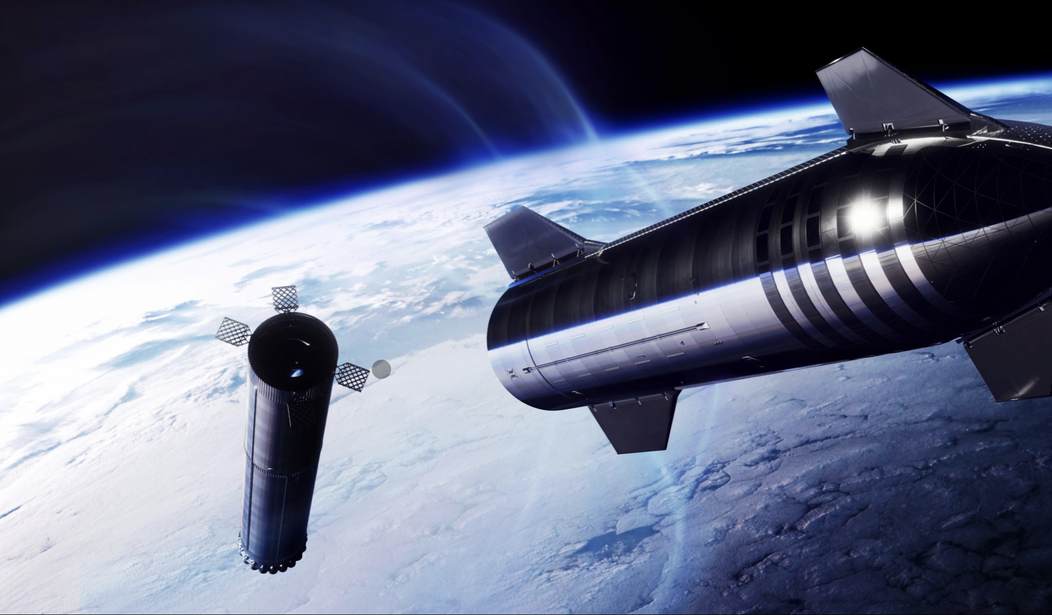Elon Musk wants to send humans to Mars in four years. He's serious, and he's got a few tens of billions of dollars that aren't doing anything right now, so why not?
His plan is to send his massive Starship rocket — the most powerful machine ever built by humans — to Mars in two years. That mission and perhaps two others will be unmanned. The goal will be to land on Mars and test the systems that colonists will use to get started building a habitat.
Four years from now, Musk will launch the Starship with people on board. That's the plan, anyway. Musk has many doubters, and it's by no means certain that NASA will allow him to try it. NASA won't let Musk launch a crewed Starship unless they can be reasonably certain that the mission will be successful.
The biggest difference between today and the moonshots in the '60s and '70s is society's attitude toward risk. We know a lot more about the dangers of space travel today than we did in 1969 when we first went to the moon. Neil Armstrong, the first man to walk on the moon, told his family he thought he had a 50-50 chance of returning alive. Privately, NASA agreed.
Today, the Artemis space capsule taking a crew back to the moon wouldn't get off the ground with those odds.
It was different in 1969. The "Race to the Moon" shouldn't have been a race, but President John Kennedy made it one to spur patriotism and the technological benefits of building rockets and other systems to take us to the Moon and return to Earth.
Kennedy was right. The explosion in technology propelled the U.S. into a technological future undreamt by almost anyone. But the $290 billion (in today's dollars) NASA spent to get us to the Moon was unnecessary.
The best way to do it, if we hadn't been in such a hurry, would have been to build a near-earth orbit space station in the 1960s, using the station to construct rockets to take people to the Moon far cheaper than NASA, where another space station could have been built in the Moon's orbit.
The advantages of such a program could have allowed us to construct a Moon base, mine the Moon for materials to allow us to build rockets, and make fuel and landing craft to go to Mars. Instead of going to the moon in 10 years, we would have made it by 1990, building valuable infrastructure along the way.
If we had followed that path, it would have cost us a fraction of what NASA spent in the 1960s and early 1970s to get to the Moon. We'd probably already be on Mars by now if we had chosen to go.
Instead, Musk is trying to get humans to Mars for a fraction of the cost that NASA is planning on spending just to get us back to the Moon. Musk is spending around $10 billion to develop Starship which will be capable of landing on the launchpad from which it takes off. That will save Musk tens of billions of dollars once his Mars program gets underway. As for the rest, Musk has no idea. It will certainly top $100 billion, given all the problems that scientists envision in getting to Mars. Not just technological problems: there are numerous health issues involved in traveling for eight months in Zero-G. No one knows what the gravity of Mars, which is just 40% of Earth's gravity, will do to the human body. The trip will make crossing the U.S. in the early 19th century look like a picnic.
Related: 'Second Wave' Attack on Hezbollah Targets Walkie-Talkies and Other Electronic Equipment
How much will it cost NASA to get back to the Moon? The Artemis program has cost U.S. taxpayers $93 billion so far and has numerous problems that have to be ironed out before it's safe enough for human passengers.
Heat shield issues: During the Artemis 1 test flight, the Orion spacecraft's heat shield wore away differently than expected during reentry into Earth's atmosphere. The inspector general's report noted over 100 areas where the heat shield material chipped away. A video released by NASA showed charred material flying off the heat shield as it reentered. NASA is still unsure of the cause, but one idea is to slow down the re-entry speed.
Launch facility damage: The launch facility was significantly damaged during the first launch.SLS rocket issues: The SLS rocket system experienced several issues, including malfunctioning valves, leaks, and computer failures. One launch was canceled after one of the four rocket engines overheated. Another launch was canceled due to a fuel leak in a supply hose. A third launch was canceled due to poor weather conditions caused by Hurricane Nicole.
Does that sound like a bird that will be ready to fly by next fall?
There's no system for landing on the moon yet, and the spacesuits are riven with problems. That's why I'd be willing to bet that Elon Musk will land on Mars before NASA can land on the Moon.










